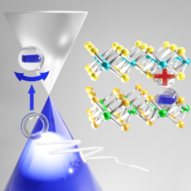
Energy levels in molecules
GW is a state-of-the-art method to compute energy levels of electrons in molecules. Numerical parameters need to be carefully chosen to achieve numerical convergence of GW results. The GW100 test is the state-of-the-art test suite for testing the numerical accuracy of GW. The GW100 test suite contains reference GW results for 100 molecules. Extremely tight numerical parameters are needed for 5 of the 100 molecules (BN, ozone, BeO, MgO, CuCN). Many GW algorithms cannot handle these five difficult molecules and give wrong results.
In GW100, the five molecules have been dealt with the PBE exchange-correlation functional. PBE is the most used functional for solids, but PBE comes with shortcomings for molecules. Moreover, the five molecules have been treated with paired electrons in GW100, i.e. every molecular orbital is occupied by a spin up and a spin down electron. The five molecules (O3, BN, BeO, MgO, CuCN) are unstable under ambient conditions which indicates unpaired electrons in these molecules.
In this computational project, the GW single-electron levels and the energy gap will be calculated for the five molecules BN, ozone, BeO, MgO, CuCN considering unpaired electrons and different exchange-correlation functionals. In practice, electronic structure codes will be employed that already implement the computational GW methodology for treating molecules with other functionals and with unpaired electrons.

